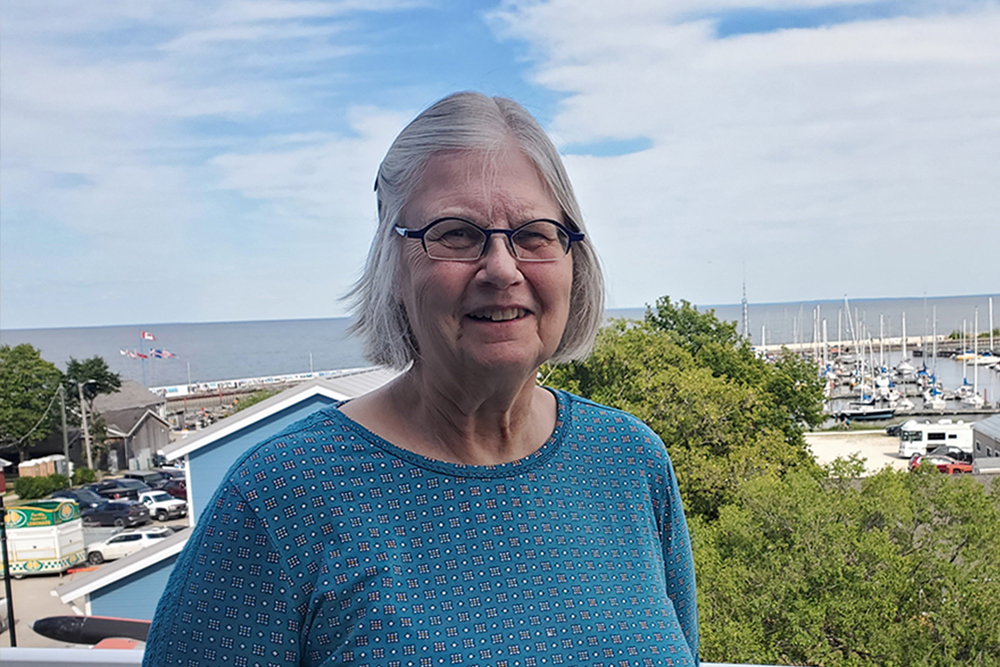The joy of riding
On horseback in Iceland
Auther: Grant Brandson, Vancouver, BC

My father Wayne Brandson and I wanted the full Icelandic experience; we had to find our inner Viking and ride Icelandic horses! June 14, 2010, was a magical day. We were in Iceland and determined that our innate Viking or Icelandic cowboy ability would shine through. The first thing that we had to do on reaching the stables was to wear suitable clothing as it was still overcast, cold, and potentially wet outside. We were dressed in bright orange rain gear. I wondered if this was merely a precautionary measure in case the horse took off – the guide could see an orange meatball disappear over the ridge.
The guides asked us if we had any experience riding horses. My dad spoke highly of his experience of riding a horse once – fifty years ago. They nodded politely and then went about their business, carefully selecting the most docile, slow, and obedient horse possible. They asked me the same question; dad piped up and informed them that I once had horseback riding lessons in Bermuda – 35 years ago. He never mentioned that I was thrown off a horse. I prayed for the second slowest horse.
All suited up, we went out and met our horses. Mine was all black. It was about 13 to 14 hands, 360 kilograms, “pony sized” but tough looking. I noticed the saddle was somewhat different (not a western saddle with a knob at the front). There was nothing to grip onto. I put my foot in the stirrup and managed to climb on top. My five second horseback riding lesson consisted of holding the reins in an overhand grip, pull to left to go left, pull to right to go right, pull back to stop, and kick to go forward or speed up. I patted my horse hoping it would be merciful, and we would get along. Silently, I made a pledge to the horse that if he was good, I would not require anything more of him; there would be no showing off or heroics here!
Perched up top and balancing precariously seemed like straddling a wet log that required all your concentration so you wouldn’t roll off to one side. Fortunately, my horse fell into line following the lead guide immediately.
Squeezing my inner leg muscles, I tried to gain a more secure feeling or seat on the horse. I’m not sure if it worked, but I did squeeze for all I was worth! Bouncing up and down, my concentration focused on staying on the horse; it was an unfamiliar and unique experience. Five minutes into the ride the guide asked us how long we were going out for. With insane optimism we told her “two hours.” Silently, I pondered if I could last another twenty minutes.
Concentrating, concentrating, concentrating. I didn’t want to fall off the horse even though Icelandic horses are “pony-sized” – a bad fall could break an arm or separate a shoulder. As we walked past a barbed wire fence, I contemplated how falling on that would feel. Cut up and excruciating pain was all that came to mind. We passed down roadways, onto a narrow trail that cut through a rocky shoreline, then back and forth through several streams. I think we were getting into some beautiful countryside, but I couldn’t look around and enjoy it as my horse “Blackie” had just broken out into a trot.
Most horses have three gaits. Icelandic horses have five gaits: walk, trot, canter/gallop, tolt (a four-beat gait), and flying pace (a very fast two-beat gait). The trot increased the bouncing up and down faster, making this orange bingo ball comedy show progressively more painful. I could feel the strain of my inner leg muscles as I fought to stay on the horse. My lower back muscles started aching. My concern turned to my 67-year-old Dad who was behind me. I asked him, “How are you making out?”
“Fine; my insides are shaking up a bit.”
We had already come a fair distance in a short amount of time. We still had to go back and forth across several streams. I thought if we kept going, we would be annihilated by the time we got back to the stables. Reluctantly, I told the guide we should head back. We had a great introduction to what it was like to ride an Icelandic horse. I decided it’s wiser to err on the side of caution. If we were totally worn out, the likelihood of one of us falling off would be that much greater.
The guide looked at me with some disbelief. “Are you sure?” It was then I noticed the guide was just a kid, probably just in her teens. Grinding my teeth I bowed my head. “Yeah, I’m sure ...” Our “Clint Eastwood goes to Iceland” riding day was over. I just wanted to survive this adventure, save my testicles, and my dad in the process.
The return trip seemed to go much faster, perhaps it was because I could gauge the distance we had to go. It wasn’t as if we were riding off into the abyss. Arriving at the stables, we dismounted and my feet were relieved to be on solid ground again. Our legs and inner thighs burned and felt the effects of our ride. Our horse legs rocked back and forth, forcing us to crab walk sideways. There was a general sense of happiness and relief. We had come back intact and in reasonably good shape. Dad admitted that I had made the right call, turning back when we did. Crab walking, we headed to the s

